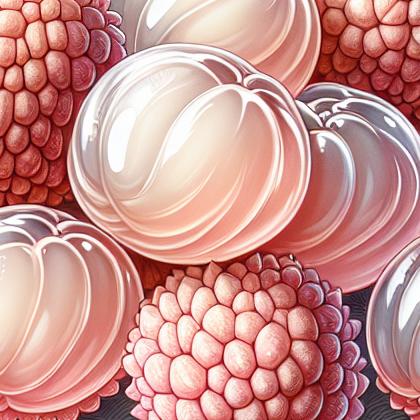Showing results for 'Lychee pulp'
close
Lychee Pulp

The lychee (Litchi chinensis; Chinese: 荔枝) is the sole member of the genus Litchi in the soapberry family, Sapindaceae.It is a tropical and subtropical fruit tree native to the Guangdong and Fujian provinces of China, and now cultivated in many parts of the world. The fresh fruit has a "delicate, whitish pulp" with a floral smell and a fragrant, sweet flavor. Since this perfume-like flavor is lost in the process of canning, the fruit is usually eaten fresh.
Lychee pulp Pairs With:
Food Item
Flavor Affinity Level
Lychee pulp Properties:
| Food Property | Type | Description |
|---|---|---|
| Flavor Profile | Sweet | Lychee pulp has a sweet flavor profile with notes of floral and tropical fruitiness. |
| Sour | Lychee pulp may have a slight sour undertone, especially if the fruit is not fully ripe. | |
| Texture | Firmness | Lychee pulp is firm and slightly chewy in texture. |
| Moisture | Lychee pulp is juicy and moist, with a high water content. | |
| Nutritional Value | Macronutrients | Lychee pulp is low in calories and carbohydrates, but high in vitamin C and potassium. |
| Micronutrients | Lychee pulp is a good source of vitamin C, vitamin B6, niacin, riboflavin, folate, copper, potassium, phosphorus, magnesium, and manganese. | |
| Fiber | Lychee pulp contains dietary fiber, which aids in digestion and promotes overall gut health. | |
| Color | Natural Pigments | Lychee pulp has a light pink to white color, with hints of red near the skin. |
| Aroma | Volatile Compounds | Lychee pulp has a fragrant aroma with floral and tropical fruit notes. |
| Chemical Composition | Acidity/Alkalinity (pH) | Lychee pulp is slightly acidic with a pH range of 3.30-3.70. |
| Cooking Behavior | Heat Conductivity | Lychee pulp is not typically cooked, but can be added to various dishes for a burst of sweetness and flavor. |
Food Pairing App - Version 1.2.0
